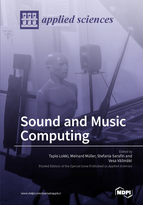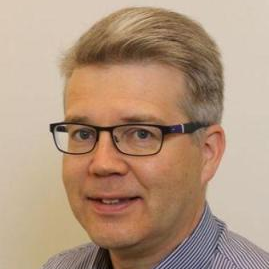Sound and Music Computing
A special issue of Applied Sciences (ISSN 2076-3417). This special issue belongs to the section "Acoustics and Vibrations".
Deadline for manuscript submissions: closed (3 November 2017) | Viewed by 200822
Special Issue Editors
Interests: virtual acoustics; spatial sound; psychoacoustics
Interests: sonic interaction design; sound for virtual and augmented reality; audio-haptic interaction; sound synthesis by physical models; multimodal interfaces; multimodal perception and cognition; virtual and augmented reality
Special Issues, Collections and Topics in MDPI journals
Interests: music information retrieval; music processing; audio signal processing
Interests: acoustic signal processing; audio signal processing; audio systems; music technology
Special Issues, Collections and Topics in MDPI journals
Special Issue Information
Dear Colleagues,
Sound and music computing is a young and highly multidisciplinary research field. It combines scientific, technological, and artistic methods to produce, model, and understand audio and sonic arts with the help of computers. Sound and music computing borrows methods, for example, from computer science, electrical engineering, mathematics, musicology, and psychology.
In this Special Issue, we want to address recent advances in the following topics:
· Analysis, synthesis, and modification of sound
· Automatic composition, accompaniment, and improvisation
· Computational musicology and mathematical music theory
· Computer-based music analysis
· Computer music languages and software
· High-performance computing for audio
· Interactive performance systems and new interfaces
· Multi-modal perception and emotion
· Music information retrieval
· Music games and educational tools
· Music performance analysis and rendering
· Robotics and music
· Room acoustics modeling and auralization
· Social interaction in sound and music computing
· Sonic interaction design
· Sonification
· Soundscapes and environmental arts
· Spatial sound
· Virtual reality applications and technologies for sound and music
Submissions are invited for both original research and review articles. Additionally, invited papers based on excellent contributions to recent conferences in this field will be included in this Special Issue; for example, from the 2017 Sound and Music Computing Conference SMC-17. We hope that this collection of papers will serve as an inspiration for those interested in sound and music computing.
Prof. Dr. Tapio Lokki,
Prof. Dr. Stefania Serafin,
Prof. Dr. Meinard Müller,
Prof. Dr. Vesa Välimäki
Guest Editors
Manuscript Submission Information
Manuscripts should be submitted online at www.mdpi.com by registering and logging in to this website. Once you are registered, click here to go to the submission form. Manuscripts can be submitted until the deadline. All submissions that pass pre-check are peer-reviewed. Accepted papers will be published continuously in the journal (as soon as accepted) and will be listed together on the special issue website. Research articles, review articles as well as short communications are invited. For planned papers, a title and short abstract (about 100 words) can be sent to the Editorial Office for announcement on this website.
Submitted manuscripts should not have been published previously, nor be under consideration for publication elsewhere (except conference proceedings papers). All manuscripts are thoroughly refereed through a single-blind peer-review process. A guide for authors and other relevant information for submission of manuscripts is available on the Instructions for Authors page. Applied Sciences is an international peer-reviewed open access semimonthly journal published by MDPI.
Please visit the Instructions for Authors page before submitting a manuscript. The Article Processing Charge (APC) for publication in this open access journal is 2400 CHF (Swiss Francs). Submitted papers should be well formatted and use good English. Authors may use MDPI's English editing service prior to publication or during author revisions.
Keywords
-
Audio signal processing
-
computer interfaces
-
computer music
-
multimedia
-
music cognition
-
music control and performance
-
music information retrieval
-
music technology
-
sonic interaction design
-
virtual reality








